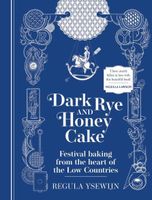Label
All
0
Clear all filters
Complimentary bread
Appears in
Published 2023
For many village bakeries, a complimentary end-of-theyear loaf was a way to thank villagers for their custom. In the 17th century, this was often seen as a breach of the bread-price law. So deeply rooted were the customs of giving bread or koek for Saint
The size of the gifted bread depended on how much the customer had spent at the bakery that year, which led to jealousy between neighbours if one family’s complimentary loaf was larger than another’s. Even in the early 20th century, the tradition was still alive; it was not the bread law or ordinances, but an eye on profits that motivated the end of free festive bread.
Part of
Advertisement
Advertisement
The licensor does not allow printing of this title


